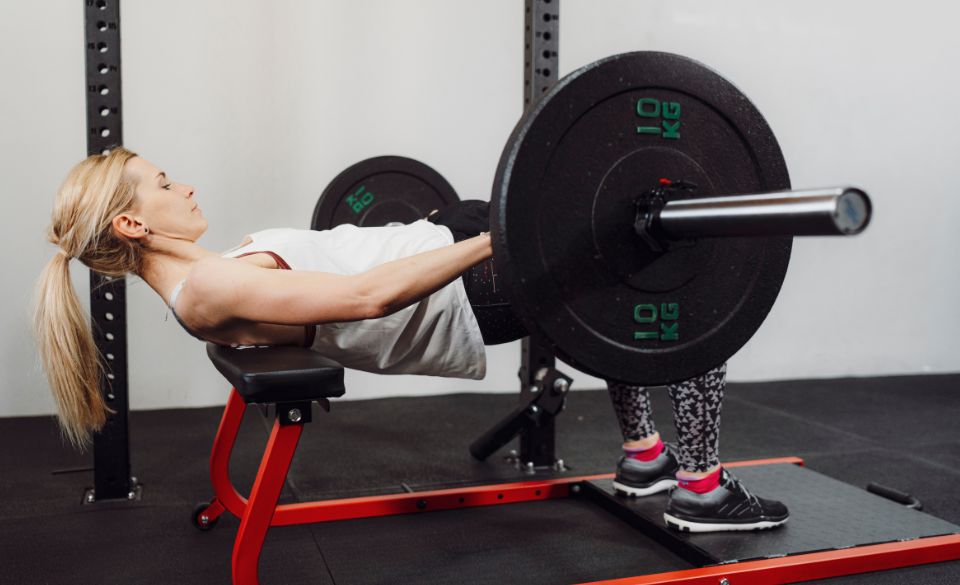
Feel the Burn: Adapt these Hip Hinge Exercises for Maximum Results
Page Contents
Hip hinging is a powerful exercise that can be used to target the glutes, quads, hamstrings and lower back muscles. It’s an important movement to learn and master as all major barbell lifts – like the squat and deadlift – involve some degree of hip hinging.
Performing exercises that involve hinging at the hips can help strengthen and condition the muscle groups mentioned above, Austria, as well as improve movement efficiency and help to prevent injury in sports and activities. With that in mind, here are some hip hinge exercises that you can start adding to your program.
The first exercise on the list is definitely the glute bridge. To properly execute this exercise, start by lying flat on your back, feet hip-width apart. Make sure to engage your core and drive your heels into the ground, pushing your hips upward and squeezing your glutes at the top of the motion. This works your glutes nice and effectively, and can be done as a single rep or with a pause at the top of the motion for added benefit.
A classic hip hinge exercise is the Romanian deadlift, commonly referred to as the RDL. This exercise is a great way to improve lower back strength, and can be used as a full body exercise – provided you use a weight heavy enough. To perform this move correctly, stand with your feet hip-width apart holding a barbell in front of your thighs. Stick your hips backwards, lower down while keeping your back straight, and drive through your heels to stand back up.
Another one of the go-to hip hinge exercises is the single leg Romanian deadlift, or SLDL. This exercise is a great way to isolate your glutes while also getting some good lower back and hamstring activation. To execute the SLDL, stand with your feet hip-width apart holding a dumbbell in each hand. Slide one leg back and begin to hinge at the hips, lowering yourself down while keeping your back flat until your torso is parallel with the floor. Come back up by driving your leg forward and push through your heel.
Apart from the traditional hip hinge exercises mentioned above, there is another great option for those looking to maximize their hip hinge training – the kettlebell swing. This exercise is a great combination of power, explosiveness, and hip strength. To perform a proper swing, hold a kettlebell with two hands and swing it backwards between your legs. Drive through your hips and squeeze your glutes to swing the kettlebell up overhead, and return the weight back to the starting position.
Explosive Strength: incorporating Plyometrics
Plyometric exercises are explosive movements designed to build power, explosiveness, and strength in muscles. Adding plyometric drills to your hip hinge routine can really help to build up lower body strength and power in the glutes, quads, and hamstrings.
The first motion you’ll want to add is the jump squat. Jump squats involve explosive movement and are a great way to work your legs and glutes. To execute a jump squat, start with your feet slightly wider than hip-width and lower down into a squat position. Explode off the ground and jump as high as possible, using your arms for momentum. Land softly as possible, reset, and repeat.
Another great way to build up explosive lower body power is the box jump. This exercise will challenge the lower body, as well as your core. Start by standing a few inches away from a secure, low box. Squat down and use your arms to help generate momentum. Jump onto the box, absorbing the force with your legs. Step down from the box and repeat.
Another great plyometric exercise to incorporate is the tuck jump. To execute a tuck jump, start by standing with your feet hip-width apart and jumping up explosively. As you reach the peak of your jump, tuck your knees up towards your chest and use the momentum to propel yourself higher. When you land softly on the ground, reset and repeat.
Lastly, the broad jump is a great exercise for developing lower body power. To perform a broad jump, start by standing with feet hip-width and power up off the ground. Jump as far forward as possible, using your arms for momentum. Land softly, absorb the impact with your legs, and step back to the starting position.
Bodyweight Variations
For those of you who don’t have access to a gym, there’s no need to worry as there are plenty of great bodyweight hip hinge exercises you can do from the comfort of your home.
The first one we’ll talk about is the hip thrust. This is a great exercise that can help work your glutes and lower back muscles from the comfort of home. Start by getting into the bridge position with just your upper back on the ground and your feet flat on the floor. Drive your hips upwards and squeeze your glutes at the top of the motion. Return to the starting position and know pause if necessary for added resistance.
Another great bodyweight hip hinge exercise is a good old-fashioned reverse lunge. To properly execute the reverse lunge, start by standing with your feet hip-width apart and step one leg back behind your body, going into a lunge position. Then drive that back knee into the ground, while keeping your weight in your front heel. Drive up and return to start.
One of the best bodyweight exercises for hinging at the hips are good morning squats. This variation of the traditional squat puts more emphasis on your posterior chain as you hinge more at the hips. Make sure to keep your torso upright and drive your hips backward, pushing your glutes and hamstrings behind you. Drive through your feet and stand up to the starting position.
Another great way to work the muscles involved with hip hinging just using your bodyweight is the single-leg hip thrust. Start by placing your upper back on the ground and just one foot on the ground, with the other leg extended in the air. Then, drive through your single foot, pushing your hips up to the sky and squeezing your glutes at the top of the motion.
Resistance Band Variations
Resistance bands are a great tool to add to your hip hinge arsenal if you’re looking to increase the intensity of your workouts. Here are a few of the best resistance band exercises you can incorporate to get the most out of your hinging movements.
The first resistance band hip hinge exercise is the band good morning. This variation of the traditional good morning exercise will really challenge your glutes and hamstrings. Start by standing with your feet hip-width apart and placing a resistance band just above your knees. Push your hips backward, bending forward at the waist. Keep your torso nearly vertical and come back up to the starting position.
Another great resistance band hip hinge exercise is the single leg glute bridge. This exercise will really help to target the glutes and get them working hard. Start by lying on back and placing a band just above your knees. Lift one leg and bridge up, driving your heel into the ground and squeezing your glutes. Hold for a few seconds and slowly lower down.
You can also use resistance bands to add an extra challenge to the hip thrust exercise. To do this, set up the same way as you would with an un-resisted hip thrust, but place a band around your knees. Drive your hips up and push against the band to really drive your glutes and hamstrings.
Lastly, you can use a resistance band for a single leg Romanian deadlift variation. To execute this movement, set up the same way as you would a traditional SLDL, but place a resistance band around your legs. Lower down and drive through your heel to stand up, pushing against the band the entire time to really engage your lower body muscles.
Plyometric & Equipment variations
Incorporating plyometrics and heavier weightlifting elements into your hip hinge routine can really add extra intensity and variation to your workouts.
The first variation we’ll talk about is the jump squat press. This move will not only challenge your lower body muscles, but also your upper body strength. To perform this exercise, start by standing with your feet hip-width apart and a heavy weight in each hand. Lower down into a squat and explode off the ground, using your arms for momentum and driving the weights up. Come down in a controlled manner and repeat.
A great way to add an additional challenge to the hip thrust exercise is to use a barbell. To do this, set up the same way you would for a regular hip thrust, but instead of leaving your hands empty, hold onto a barbell across your hips. Drive your hips up, pushing against the barbell as you come up, and squeezing your glutes at the top of the motion.
Another great plyometric exercise to incorporate if you’re looking for an additional challenge is the single leg box jump. This is a great way to work on lower body power, explosiveness, and small stabilization muscles. Start by standing a few inches away from a secure, low box. Swing one leg back and power off the ground. Land softly on the box and, if you’d like, you can add a pause for added intensity.
Lastly, you can add an additional challenge to your single leg Romanian deadlift by incorporating a sandbag or other heavy weight into the exercise. Start by standing with your feet hip-width apart and holding a heavy weight in one hand. Slide the free leg back and hinge at the hips. Lower yourself down as far as you can while keeping your back straight, and drive through the heel to stand back up.




